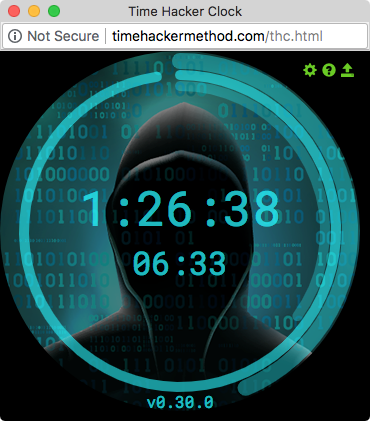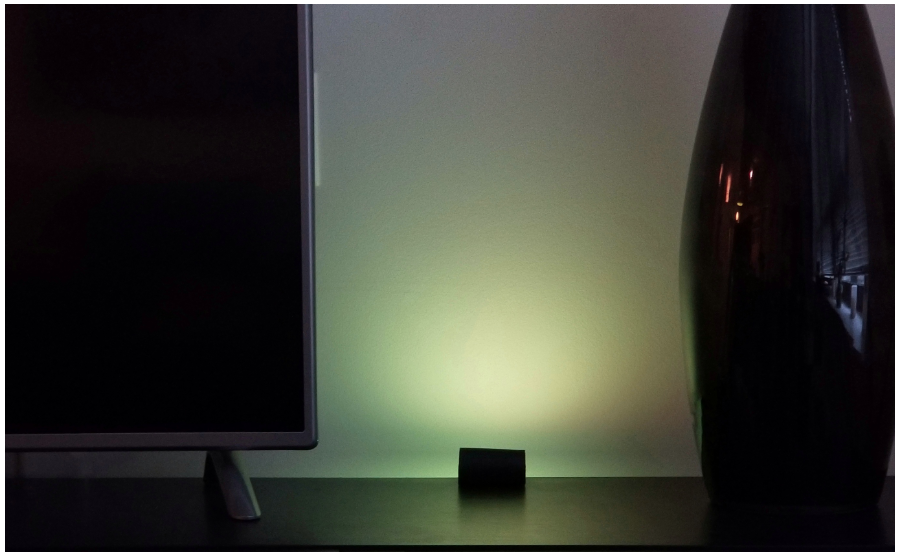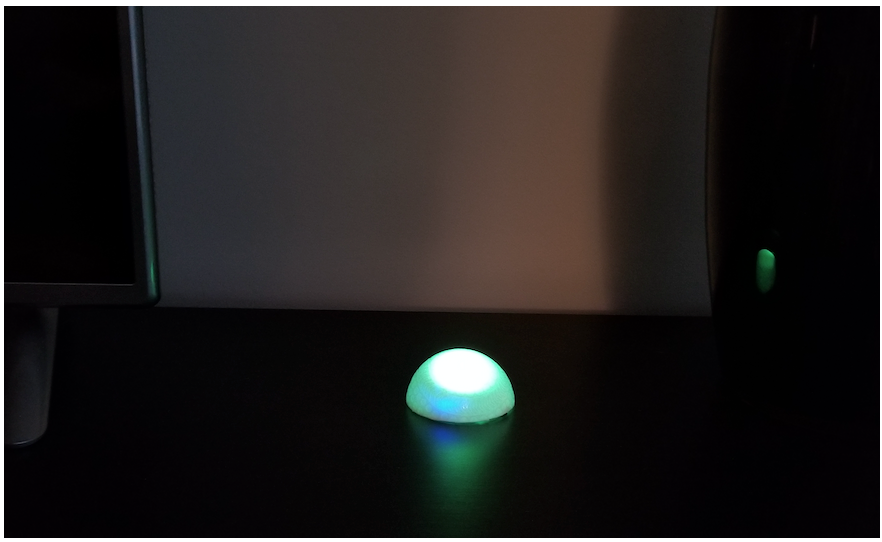A Time Hacker Clock (THC) is a device based on the Time Hacker Method (THM). THM combines simple productivity guidelines with devices that emit shapes or colors to quickly convey how much time remains in a given day or time block.
In this post, we’ll look at three examples of THCs. The complete plans for each of the clocks are freely available and open sourced on Github.
Web-based THC
The first clock we’ll see is a web-based clock. This is the easiest and most readily available clock to use. You can use it on your laptop and phone. This version of the clock uses concentric circles which shrink with the passage of time.

Web-based Time Hacker Clock
Try the Web-THC or visit the github repo to learn more.
Arduino and Raspberry Pi based clocks
I’ve created two hardware-based clocks using a Wifi-enabled Raspberry Pi Zero and a Bluetooth-enabled Arduino microcontroller.
Each product plays to the strengths of the underlying device. For example, the Wifi-enabled Pi Zero clock hosts a web server which accepts commands via a web browser. The Bluetooth-enabled Arduino connects to a smartphone without the need for Internet access.

Raspberry Pi Time Hacker Clock
Both clocks rely on the concept of projecting subtle visual sensory cues onto an environment. The basic idea is that casting (projecting) a colored light onto a surface in an environment can be used to convey information depending on light characteristics such as Hue, Saturation and brightness values (levels). So seeing an orange color cast on a wall might convey that there is 40% of time remaining in a given time period.
The Raspberry Pi based THC, shown below, achieves this using color casting.

Color casting
The Arduino based THC is closed in a dome cover which emits colored light. Given that it runs on a smaller microcontroller the battery life is quite good.

Ardunio-based Time Hacker Clock
The complete plans for both devices are freely available as open sourced projects.